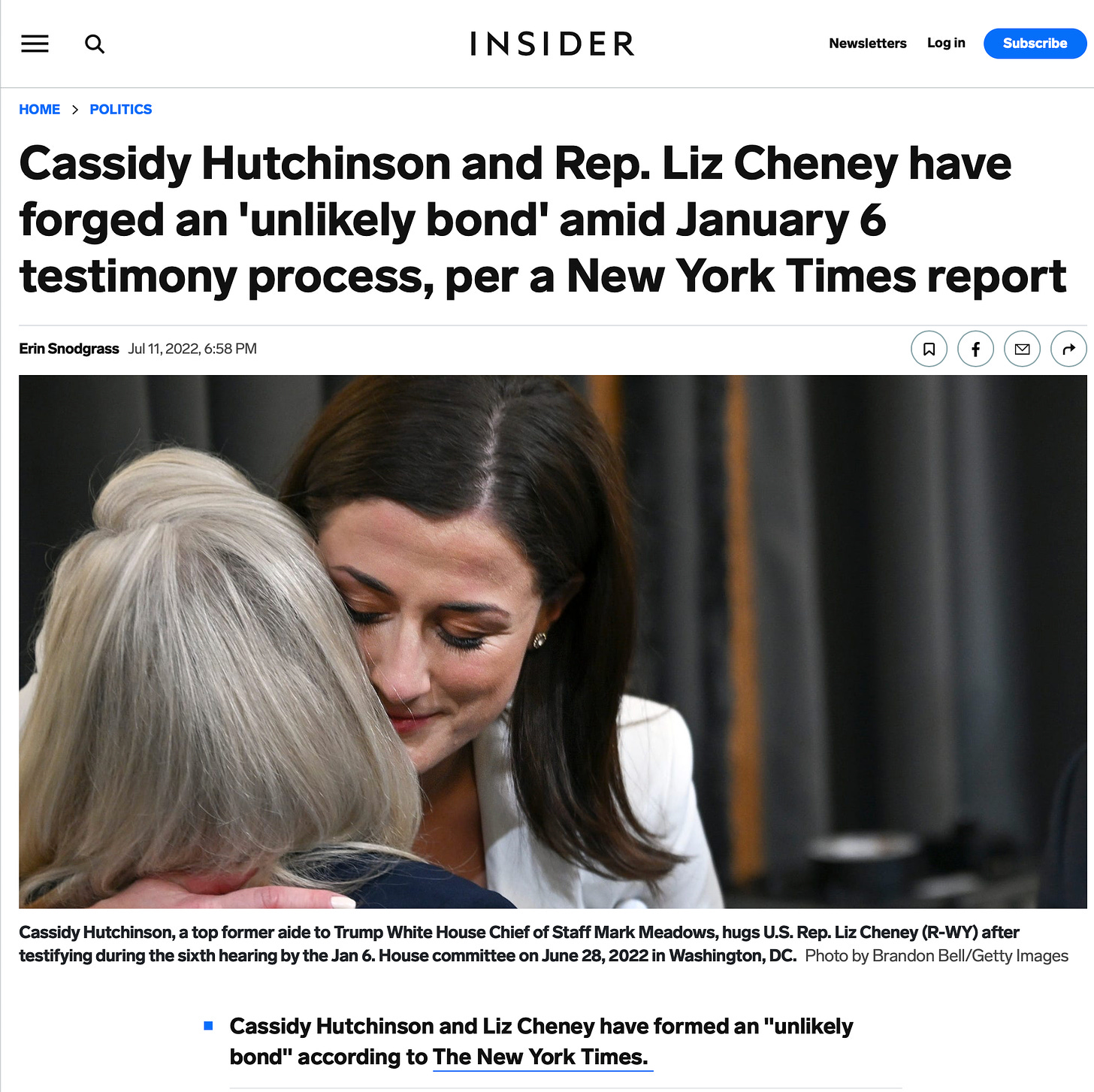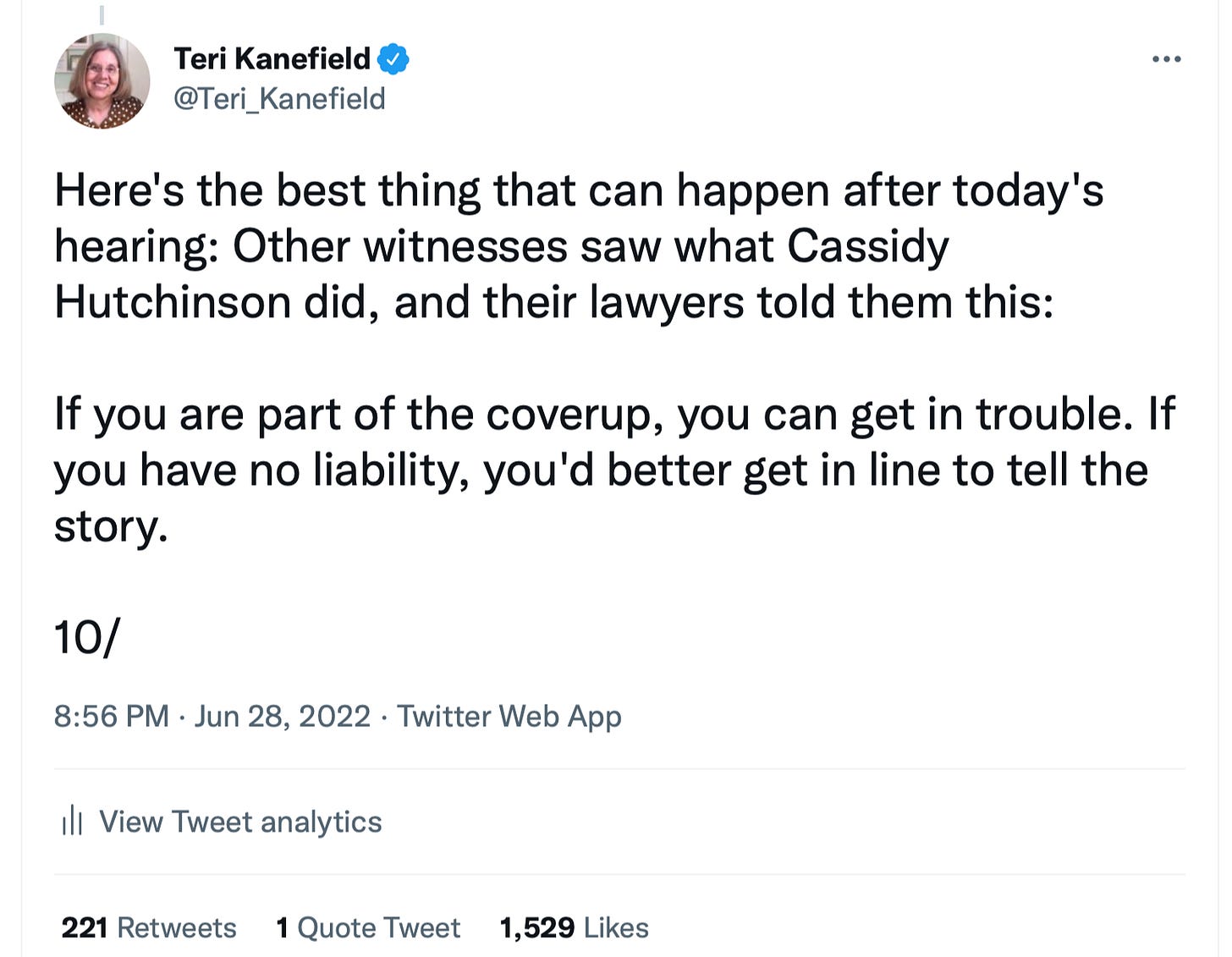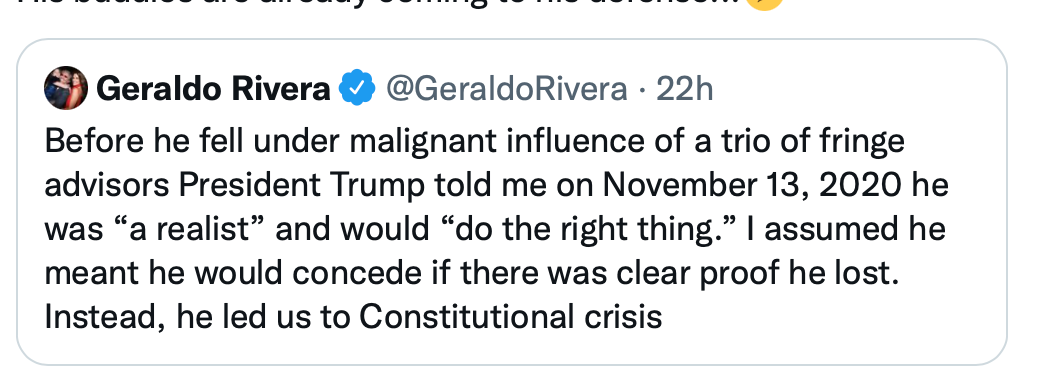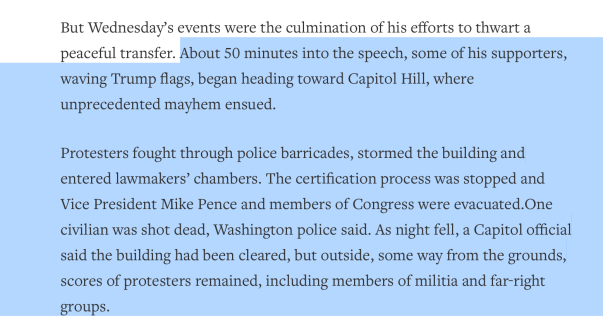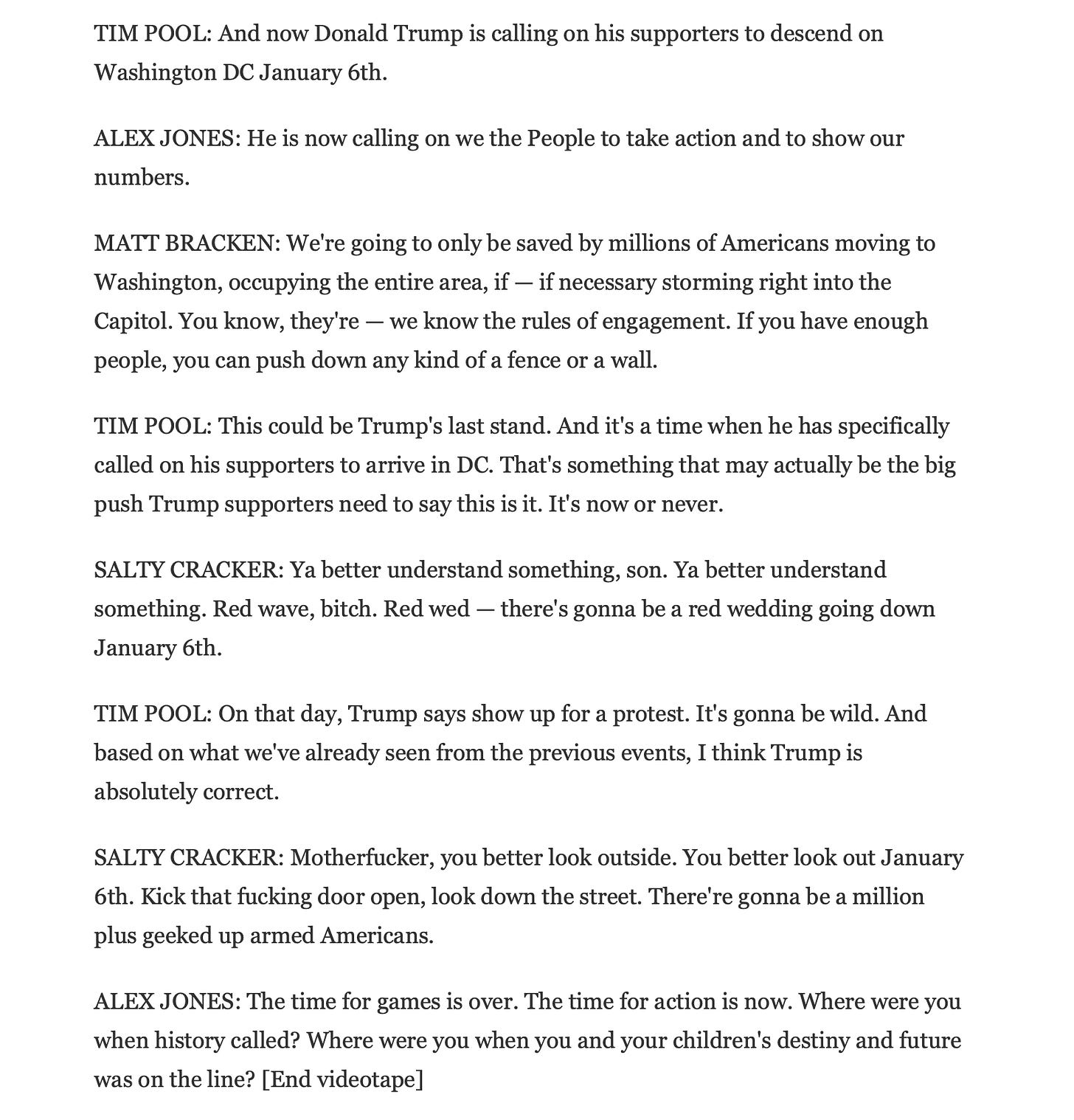Here is one way to get to the truth: subpoena them all, force them all to tell the truth, and throw them in jail if they don’t.
Unfortunately, the strong arm method is unlikely to get you very far.
Problem #1: To “force them to tell the truth,” you have to know the truth before you start questioning witnesses, which is the wrong order of things. Through the questioning of witnesses, the truth comes out.
Problem #2: People can say they don’t remember. Technically it’s perjury if a person says “I don’t recall” but they actually do recall. But it’s rarely prosecuted because it’s hard to prove, and a lot of people really can’t remember details.
Problem #3: The Fifth Amendment is always available as a way to avoid answering questions.
A hostile witness or an adverse witness is one who doesn’t want to be there and doesn’t want to talk. A good cross-examiner can squeeze facts out of a hostile witness, but it’s hard.
If all the witnesses are hostile, you may not get very far. The idea is to have as many cooperating witnesses as possible.
1. Cassidy Hutchinson’s Process
4. The Process: How Our Understanding of Events has Evolved
What We Knew at the time of Trump’s Second Impeachment
On December 19, 2020, Trump summoned supporters to D.C. with his “be there, will be wild” Tweet.
During Trump’s January 6 speech on the Ellipse, he told the crowd: “If you don’t fight like hell, you’re not going to have a country anymore.” Then, perfectly timed for when Congress was scheduled to certify the election, Trump directed his protectors to the Capitol and said he would accompany them.
Reporting at the time of Trump’s second impeachment told us this:
The theory was that (1) Trump’s December 19th tweet called his supporters to Washington D.C.,(2) his speech helped rile them, and then (3) after they reached the Capitol, they got out of control.
Legal scholars at the time debated whether “be there, will be wild” and “fight like hell” was legally sufficient to prove that Trump incited violence given that political speech is protected and the standard of proof in criminal trials is high.
No surprise, Trump’s defense at his impeachment was that his speech prior to the violence was protected by the First Amendment and that lots of politicians say “fight like hell.”
At the time, the emphasis was on the fact that the impeachment was not a criminal trial so the standard of proof was lower.
How the January 6 Hearings Have Changed Our Understanding of What Happened
Since then we have learned that the paramilitaries that led the attack on the Capitol (1) were not at the Ellipse when Trump gave his speech (they skipped the rally) and that (2) they came prepared for military action on January 6.
In other words, what happened was a lot more complex than what we thought at first. While Trump’s speech did incite members of the crowd, that alone would not have been enough to create the kind of damage that was done. Without help from these militias, it’s doubtful they would have been able to get in. Most likely, it would have been just an unruly crowd. Hence, the plan absolutely required the military planning of these militias.
(Also note that these new details undermine the theory that Trump’s speech at the Ellipse incited the attack.)
5. Takeaways from the July 12 hearing
This hearing told us what happened after December 14, when the electoral college certified Biden as the winner of the election, and the morning of January 6.
The committee continually emphasized that Trump’s legal team, led by Rudy Giuliani, knew that they lacked actual evidence of widespread fraud, but they went ahead anyway with January 6th.
The Meeting that Triggered this Tweet:
At 1:42 am on December 19, Trump Tweeted this:
During the hours before Trump sent his tweet, a meeting described as “unhinged” was held in the White House. Attendees included:
- Trump
- Sidney Powell, a nutcase. (She’s the one who made outlandish claims about Venezuelan and Chinese interference in the election.)
- Rudy Giuliani, also a nutcase.
- Overstock.com ex-CEO Patrick Byrne (you can’t make this stuff up), another nutcase.
- Eric Herschmann, a lawyer and former political advisor to Trump.
- Pat Cipolloni. former White House counsel.
On the agenda: whether the president should sign an executive order (1) directing the Secretary of Defense to seize voting state machines effective immediately, and (2) appointing Sidney Powell as special counsel to seize those machines and then charge people with crimes.
This was a totally unhinged idea. There is no federal authority for seizing state voting machines and it would obviously allow these crazies to manipulate the evidence and then start arresting people.
The idea was shot down by Cippoloni and Herschmann. The “two camps” shouted at each other and threw vulgar insults.
The meeting occurred in various stages: For about the first 15 minutes, Trump was alone with Giuliani, Powell, and the Overstock guy.
Highlight: At one point, when Cipollone told Trump he didn’t have the authority to seize the machines, Trump told Powell, “See what I deal with. I deal with this all the time.” (I thought it was interesting that Trump was complaining about how his lawyers were continually telling him that he didn’t have the authority to do what he wanted to do.)
When the committee asked Flynn about what happened at this meeting, he took the fifth.
The meeting lasted 6 hours and ended after midnight.
Discouraged from what he wanted to do (seize voting machines), Trump sent his “Big protest in D.C. on January 6th. Be there, will be wild” Tweet.
(Raskin said there was some “ambiguity” about whether Trump actually appointed Sidney Powell as special prosecutor, and the issue flared up over the next few days, but Trump’s inner circle didn’t act on it, so nothing actually happened.)
The Extremist Groups Mobilized in Response to Trump’s 1:42 am Tweet.
Here are some examples of how these groups responded to Trump’s Tweet:
From @dcpetterson: “Red wedding” is a reference to a specific incident in Game of Thrones in which all the guests at a fancy state wedding are brutally murdered in a pre-planned massacre for political purposes. “Salty Cracker’s” reference to a “red wedding” on Jan 6 implies an encouragement to murder many (or all) members of Congress. It’s not just a generic blood bath. It is a specific reference and intentional call to a pre-arranged mass assassination.”
One social media user wrote, “It will be wild means we need volunteers for the firing squad.”
A Twitter employee testified that he feared from the reaction on Twitter to the Tweet that there would be violence. He tried without success to get Twitter to do something about it.
Connections between the Proud Boys and Oath Keepers and Trump’s Inner Circle
The committee ‘obtained evidence that Michael Flynn, Roger Stone, and Patrick Byrne (Trump allies) had connections to the oath keepers.”
We already knew about the Roger Stone connection from the DOJ indictments. I wrote about that in this NBC piece:
Trump Coordinated With Members of Congress
A White House meeting occurred on December 21 “regarding January 6.” According to White House visitor logs obtained by the committee, members of Congress present at the White House on December 21st included Congressman Brian Babin, Andy Biggs, Matt Gaetz, Louie Gohmert, Paul Gosar, Andy Harris, Jody Hice, Jim Jordan, and Scott Perry. Then Congresswoman-elect Marjorie Taylor Greene was also there.
They discussed Eastman’s theory that Pence had the authority to refuse to count electors on January 6.
Trump Kept Quiet The Fact That He Was Planning to Send The Crowd to the Capitol
This is from a text message from a rally organizer to Mike Lindell, the MyPillow CEO: “POTUS is going to have us march there/the Capitol . . . It can also not get out about the march, because I will be in trouble with the National Park Service and all the agencies. But POTUS is going to just call for it unexpectedly.”
Notice that Trump planned to call for the march to the Capitol unexpectedly 😕.
The Committee obtained this draft tweet from the National Archives:
This was never Tweeted (drafts stay around forever on the account if not deleted).
Interesting timing of a Bannon-Trump call on January 5
According to White House phone logs, Trump spoke to Bannon twice. The first call lasted 11 minutes. After that call, Bannon made his now famous declaration that “All hell is going to break loose tomorrow. It’s all converging and now we’re on, as they say, the point of attack, right, the point of attack tomorrow. I’ll tell you this, it’s not going to happen like you think it’s going to happen, Ok? It’s going to be quite extraordinarily different. And all I can say is strap in.”
Hmm. I wonder what was said during that call
Trump was in a good mood on January 5
Witness Nicholas Luna testified that Trump was in a jubilant mood on January 5 (he’d been in a foul mood for weeks) and asked if Congress would be “with him” and would refuse to certify the election. Sarah Mathews testified that he wanted to “make the RINOS do the right thing.”
Trump edited his speech at the Last Minute
In a phone call on the morning of January 6, Pence enraged Trump by telling him he would not go along with the plan to overturn the election. Trump called him vulgar names and then told his speech writer Stephen Miller to insert a line he had previously drafted targeting Pence. A single scripted reference in the speech to Mike Pence became eight. A single scripted reference to rally goers marching to the Capitol became four. (Some of these were ad-libbed.)
The word “peacefully” had been scripted. (This is important because his defense at his second impeachment was that he told the crowd to be peaceful.)
The DOJ investigation
Yesterday I had an offline discussion with someone who believes that Garland is going about the investigation all wrong. It occurred to me that much of the anger over Garland springs from just that: They think he’s going about the process of getting to the truth the wrong way.
I’ll try to pick up that topic soon, even though this week will probably get hijacked by the Bannon trial and the J6 hearing.


